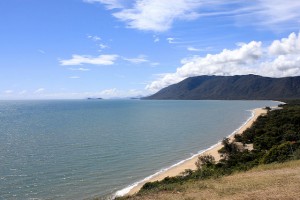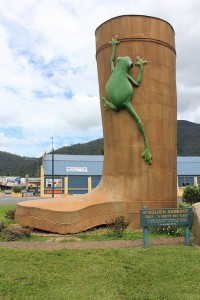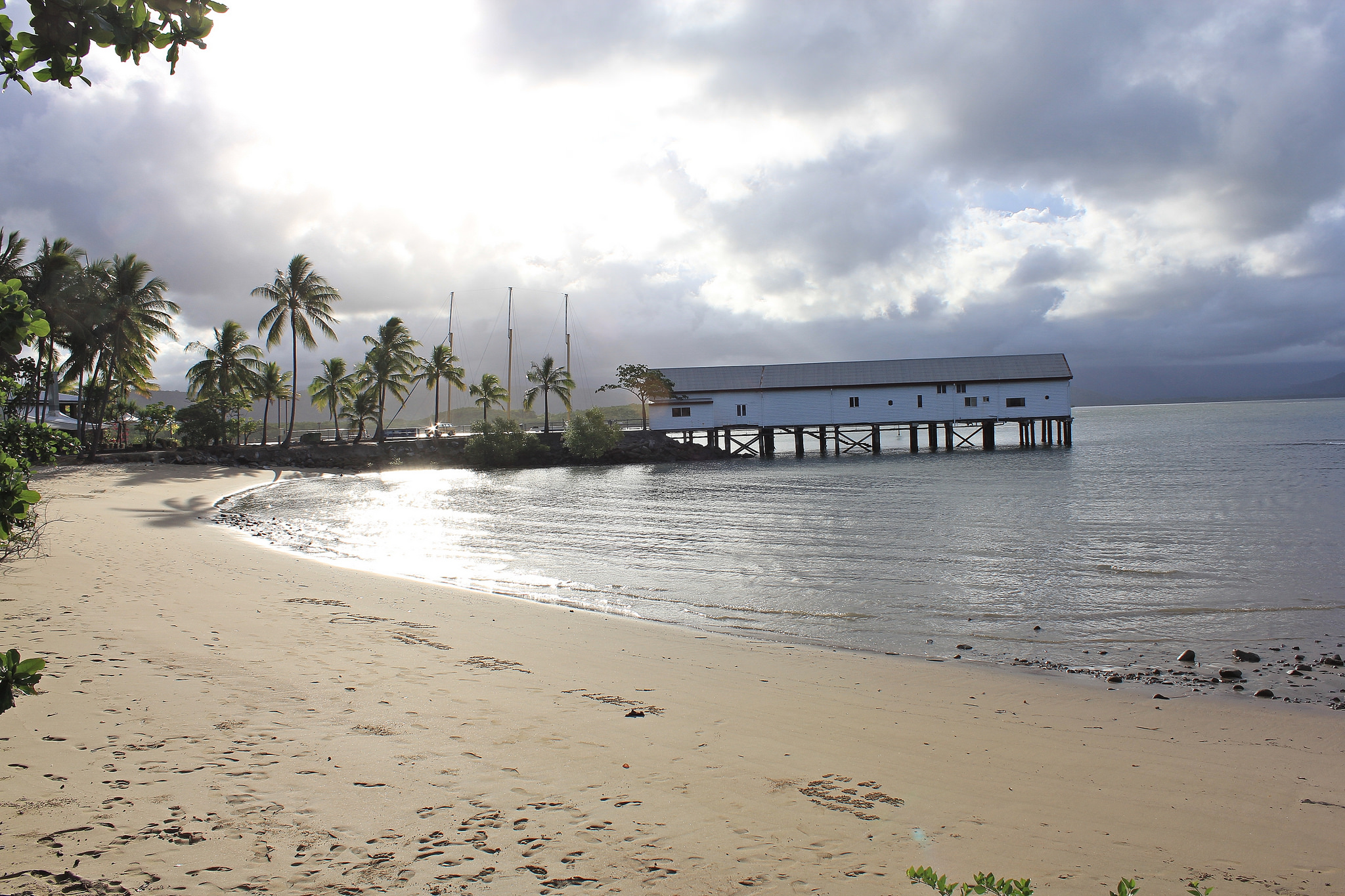On our first visit to Australia, in 2010, we visited this special region in the northeast of Queensland.
Cape Tribulation, about 140 km north of Cairns, is special because it is the only place in the world where two World Heritage Listed sites come together: the Daintree Rainforest and the Great Barrier Reef.
To get there is an easy ride from Cairns along the coastline. Passing some pleasant coastal towns, like Palm Cove and Port Douglas, enjoying the sea breeze.  If you ‘re planning to dip your feet in the sea: only do this in defined zones with nets to protect you against stingers and jelly boxes (they are extremely deathly!).
If you ‘re planning to dip your feet in the sea: only do this in defined zones with nets to protect you against stingers and jelly boxes (they are extremely deathly!).
The drive takes you closer and closer to the jungle, through the little but pleasant town of Mossman and the cane fields. Once you’ve crossed the Daintree River with an old school cable ferry – mind you: salt crocs call this river home J – you arrive in history. The Daintree National Park hides the oldest rainforest in the world – 120 million years young! Unfortunately we didn’t spot the cassowary, a huge flightless bird that only lives here and in New Guinea. But we got a teddy bear cassowary as wedding present J These birds are extremely important for the persistence of the rain forest, since they are fruit eaters and thus spread the seeds of plants.
If you’d like to travel further north via the Bloomfield Track to Cooktown and beyond to Cape York, you’ll need a 4×4. Bitumen ends here and the road is impassable after rain.
South of Cairns we got married in Mission Beach. A beautiful stretch of beach, with Dunk Island in front, a small coastal town, no more no less J
Before heading back inland we passed Tully, famous for the giant Gumboot (which you can climb). This region bulks plantations: bananas, sugar cane, tea. They have it all here.
Unfortunately they also have big spiders… the size of your hand – and one of us is feared to death of spiders … So that’s the reason only one of us saw the famous Curtain Fig Tree in the Atherton Tablelands from a very short distance (a big spider had made her web over the board walk). These trees are special though. They develop when a seed of a fig tree is deposited in the host tree. The roots reach the soil and the fig develops and strangles the host tree. This host tree falls into a neighbouring tree and vertical roots from the fig tree descend to the ground. This is the stage where the curtain is formed. The host tree rots away. Pretty amazing! The Atherton Tablelands are unique too. The swamps and termite mouths contrast heavily with the tropical landscape of rainforest and plantations. And then we even haven’t seen the Lava Tubes!
It is quite easy to sea why this region is so beautiful!
